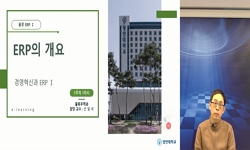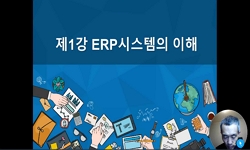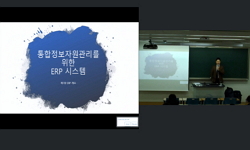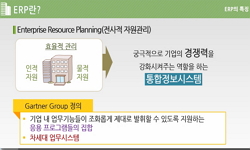지식정보화 사회에서 서비스 산업이 국가경제에 차지하는 비중이 점점 더 높아지고 있다. 한국 서비스 산업은 생산구조 측면에서 GDP 대비 54%, 고용비중 63%의 높은 비중을 차지하였으며 또 ...
http://chineseinput.net/에서 pinyin(병음)방식으로 중국어를 변환할 수 있습니다.
변환된 중국어를 복사하여 사용하시면 됩니다.
- 中文 을 입력하시려면 zhongwen을 입력하시고 space를누르시면됩니다.
- 北京 을 입력하시려면 beijing을 입력하시고 space를 누르시면 됩니다.
ERP 커스터마이징 방법에 대한 사례연구 : 서비스 산업의 ERP 구축을 중심으로 = (A) Case Study of ERP Customizing Methods : Focused on ERP Implementation in Service Industry
한글로보기https://www.riss.kr/link?id=T10326996
- 저자
-
발행사항
서울 : 서울産業大學校 産業大學院, 2005
-
학위논문사항
학위논문(석사) -- 서울産業大學校 産業大學院 , e-Business 經營學科 , 2005. 8
-
발행연도
2005
-
작성언어
한국어
- 주제어
-
KDC
325.431 판사항(4)
-
DDC
658.4038 판사항(21)
-
발행국(도시)
서울
-
형태사항
v, 56p. : 삽도 ; 26cm
-
일반주기명
참고문헌: p. 50-52
- 소장기관
-
0
상세조회 -
0
다운로드
부가정보
국문 초록 (Abstract)
지식정보화 사회에서 서비스 산업이 국가경제에 차지하는 비중이 점점 더 높아지고 있다. 한국 서비스 산업은 생산구조 측면에서 GDP 대비 54%, 고용비중 63%의 높은 비중을 차지하였으며 또 비중은 점차 확대되고 있다. 그리고 시장의 개방이 현실화되고 있으나 서비스 산업 전반의 낮은 생산성과 취약한 대외 경쟁력으로 서비스 부문의 경쟁력 제고가 시급히 요구되고 있는 상황이다. 따라서 우리나라 서비스산업의 경쟁력 제고를 위해서는 제조업에서 확산되어 있는 ERP 시스템을 경영혁신의 도구로 서비스 산업에도 도입할 필요가 있다.
그런데 ERP를 패키지 방식으로 도입하려고 할 때, 기존의 업무 프로세스와 ERP 프로세스와의 차이(gap)가 발생하여 ERP 프로그램들은 수정, 보완하고 추가 기능들을 포함시키는 작업, 즉 커스터마이징이 반드시 필요하게 된다. 실제로 ERP를 도입하는 기업들의 대부분은 그들이 필요로 하는 기능과 ERP 패키지에서 제공되는 기능과의 차이가 적어도 20% 정도가 발생한다고 한다. 따라서 ERP를 도입하려는 기업들은 ERP 패키지 기능과 도입 기업의 요구사항간의 차이를 해결할 수 있는 방안이 필요하다. 즉, 커스터마이징 문제에 대한 해결방안을 모색하는 것은 ERP 시스템을 성공적으로 도입하기 위한 가장 중요한 과제 중의 하나이다.
그러나, ERP 패키지에 대한 커스터마이징 방법론에 대한 연구는 약간의 연구가 제시되었지만, 서비스 산업의 경우에는 빈약한 편이다. 본 연구는 대표적인 서비스 산업인 대학교에서 ERP 시스템을 도입하는 경우 ERP 패키지와 도입하고자 하는 대학교의 요구사항의 차이를 해결하는 방안인 ERP 커스터마이징의 방법론을 살펴보았다.
특히, 본 연구는 ERP 시스템이 업종별로 특이하므로, ERP를 도입하였거나 혹은 도입하는 과정에 있는 대표적인 4개의 대학교를 선택하여 사례연구를 통해 4개 대학이 ERP 도입 시 대학 업무 프로세스와 ERP 프로세스와의 차이를 커스터마이징하기 위한 방법을 구체적으로 조사하여 다음과 같은 결론을 도출하였다.
4개 대학의 커스터마이징 방법을 종합해 보면 ERP의 기본기능을 수정하는 일은 없었고 포탈, 학사관리, 그룹웨어, 입시 등 ERP와 다른 기능 및 특성을 가진 소프트웨어는 기존시스템 연동으로 해야 하고, 원래 ERP에 없는 모듈 및 프로세스 차이가 많이 나는 경우는 추가개발로, 대학에 있어야 할 업무인데 예를 들면 학사 관리, 입시, 수강신청 등이 에러가 많거나 시스템 속도가 느리거나 할 경우에는 신규개발로 처리하는 것이, 나머지 업무마다의 약간의 갭은 주로 파라미터 조정으로 해결하는 것이 바람직하다고 조사되었다.
또한, 사립대학과 국립대학의 갭을 비교해 보면 사립대학(A대학, C대학)이 국립대학(B대학, D대학)보다 큰 것을 알 수 있었다. 이와 같은 결과는 사립대학에서는 연구행정, 병사관리, 시설관리, 인적자원관리, 보건소, 생활관, 기숙사 관리에서는 추가개발이라는 커스터마이징 방법이 사용되었기 때문이다.
이와 더불어, 표준화 측면에서 살펴보면 대학 업무 프로세스의 표준화를 수행할 때 ERP 특정모듈과 핵심모듈과의 커스터마이징 방법의 차이점을 발견할 수 있었다. 즉, 다시 말해서 대학에서의 표준화, 모듈화가 아직은 제대로 이루어지지 않은 특정모듈인 연구행정, 병사관리, 보건소관리, 생활관관리, 기숙사관리 등의 갭이 커서 커스터마이징의 대부분을 추가개발로 해결하였다. 그러나 핵심모듈인 재무회계, 관리회계, 구매자재, 설비관리 등은 5% 내외의 재설계를 통해 주로 커스터마이징을 수행하였다.
끝으로 본 연구 결과, 대학에서만 존재하는 특정업무는 대학 특성에 맞도록 추가개발이 되어야 하기 때문에, ERP 표준 프로세스와의 차이를 나타내는 갭의 크기가 크다는 사실을 알았다. 또한 대학 프로세스 표준화, 모듈화가 진전된다면 커스터마이징 비용이 상당히 감축될 것으로 판단되어진다.
따라서 본 연구는 대학 프로세스의 표준화 측면에서의 연구를 수행하지 못한 한계를 지닌다.
다국어 초록 (Multilingual Abstract)
The role of service industry in Korea has been enlarging more and more. It has accounted for 54% of GDP and 63% of employment. However, with the ongoing market opening, the competitive power in service industry needs to be imminently enhanced in terms...
The role of service industry in Korea has been enlarging more and more. It has accounted for 54% of GDP and 63% of employment. However, with the ongoing market opening, the competitive power in service industry needs to be imminently enhanced in terms of productivity and international competition. For the enhancement of its competitive power, it is necessary for Korean service industry to implement Enterprise Resource Planning (ERP) system, which is widely used in the manufacturing industry, as a means of management innovation.
However, a gap between the existing work process and the ERP process is generated in the course of ERP implementation. In order to avoid this kind of gap, it is necessary to customize the ERP package. ERP customizing is defined the course of modifying and complementing the ERP program and adding more functions in the program. It is said that at least about 20% of gap is generated between the functions needed and the functions provided by the ERP package when the majority of businesses actually implement ERP. Thus, businesses with the intention of implementing ERP need a solution for the gap between the functions of the ERP package and the functions required in the businesses. To look for a solution of customizing issue is one of the most important things to consider for successful ERP system implementation.
There have been a few studies on the ERP package customizing methods, but among them studies related to service industry seem rare. Therefore, the present study looked into the customizing methods as a solution of the gap between the ERP package and the requirement of a university assuming that the university, a representative of service industry, implements ERP system.
As ERP system is specialized by industry, the present study selected four representative universities which had implemented ERP or were in the process of implementing and, by conducting case studies, examined specifically the customizing methods that the four universities employed to avoid the gap between the university's work process and the ERP process in the course of implementing ERP. The following conclusions were drawn from the results of the examination.
By synthesizing the customizing methods of the four universities, no case of modification of the basic functions of ERP was found. Also, it was found desirable that the existing system should be linked to the software which has different functions and features from ERP such as portal service, school affairs administration, groupware management and entrance exam administration, that supplementary development should be done when the required module is not included in the ERP or the required process is largely different from the one of the ERP, that new development should be done when there are a number of errors in requisite processes for the university such as school affairs administration, entrance exam administration and course registration or when the system works slowly, and that moderate gaps between the rest work processes and their counterparts should be resolved by adjusting parameters.
And, in the comparison of the gaps between in private universities and in national universities, the gaps in private universities (A university and C university) were larger than the ones in national universities (B university and D university). The result was due to the fact that private universities employed the customizing method of supplementary development for research administration, military affairs administration, facility management, human resources administration, health service center management, etiquette training house management, and dormitory management.
Besides, from the aspect of standardization, there were differences in the customizing methods between the particular ERP modules and the key modules in the course of performing the standardization of university's work process. That is, there was so large gap in the particular modules such as research administration, military affairs administration, health service center management, etiquette training house management and dormitory management, of which standardization and modularity has not achieved properly yet, that most parts of the customizing were resolved through supplementary development. However, for the key modules such as financial accounting, managerial accounting, purchase and inventory management and equipment management, the customizing was mainly conducted through 5% or so of redesigning.
Lastly, the present study found that the gap, the representation of the difference from the standard ERP processes, is large for the particular processes that exist only in universities because supplementary development is necessary in order to reflect the universities' characteristics. Therefore, the advancement of standardization and modularity may considerably reduce the costs of customizing.
In addition, the present study has limitations of not conducting research from the aspects of standardization of university's work process.
목차 (Table of Contents)
- 목차
- 국문요약 = ⅰ
- 표목차 = ⅳ
- 그림목차 = ⅴ
- Ⅰ. 서론 = 1
- 목차
- 국문요약 = ⅰ
- 표목차 = ⅳ
- 그림목차 = ⅴ
- Ⅰ. 서론 = 1
- 1. 연구배경 및 필요성 = 1
- 2. 연구의 방법 및 범위 = 3
- 3. 기대 효과 = 4
- Ⅱ. ERP 커스터마이징에 대한 이론적 고찰 = 6
- 1. ERP의 개념 = 6
- (1) ERP의 정의 및 기능 = 6
- (2) ERP 패키지 모듈 = 7
- (3) ERP 시스템의 특성 및 도입목적 = 9
- 2. ERP 도입 구축 절차 = 10
- (1) ERP 구축 방법론 유형 = 10
- (2) 구축 방법론의 구성 단계 ; SAP R/3 예 = 11
- (3) ERP 구축 접근 방법 = 13
- 3. 커스터마이징 방법 = 14
- (1) ERP 커스터마이징의 정의 = 14
- (2) ERP 패키지 커스터마이징 방법 = 14
- (3) ERP 패키지 커스터마이징에 대한 기존연구 = 15
- (4) ERP 패키지 커스터마이징의 문제점 = 16
- Ⅲ. 대학 ERP 커스터마이징 방법에 대한 사례연구 = 18
- 1. 대학에서의 ERP 도입 배경 및 절차 = 18
- (1) 대학에서의 ERP 도입 배경 = 18
- (2) 도입절차 = 19
- 2. 대학 업무 프로세스 구현 사례 및 기대효과 = 20
- 3. 대학 ERP 패키지 커스터마이징 방법 사례연구 = 30
- (1) 사례연구에 대한 기본 배경 = 30
- (2) A 대학 사례 = 32
- (3) B 대학 사례 = 36
- (4) C 대학 사례 = 37
- (5) D 대학 사례 = 40
- (6) 커스터마이징 방법 사례 = 42
- 4. 시사점 = 45
- Ⅳ. 결론 = 47
- 참고문헌 = 50
- Abstract = 53












